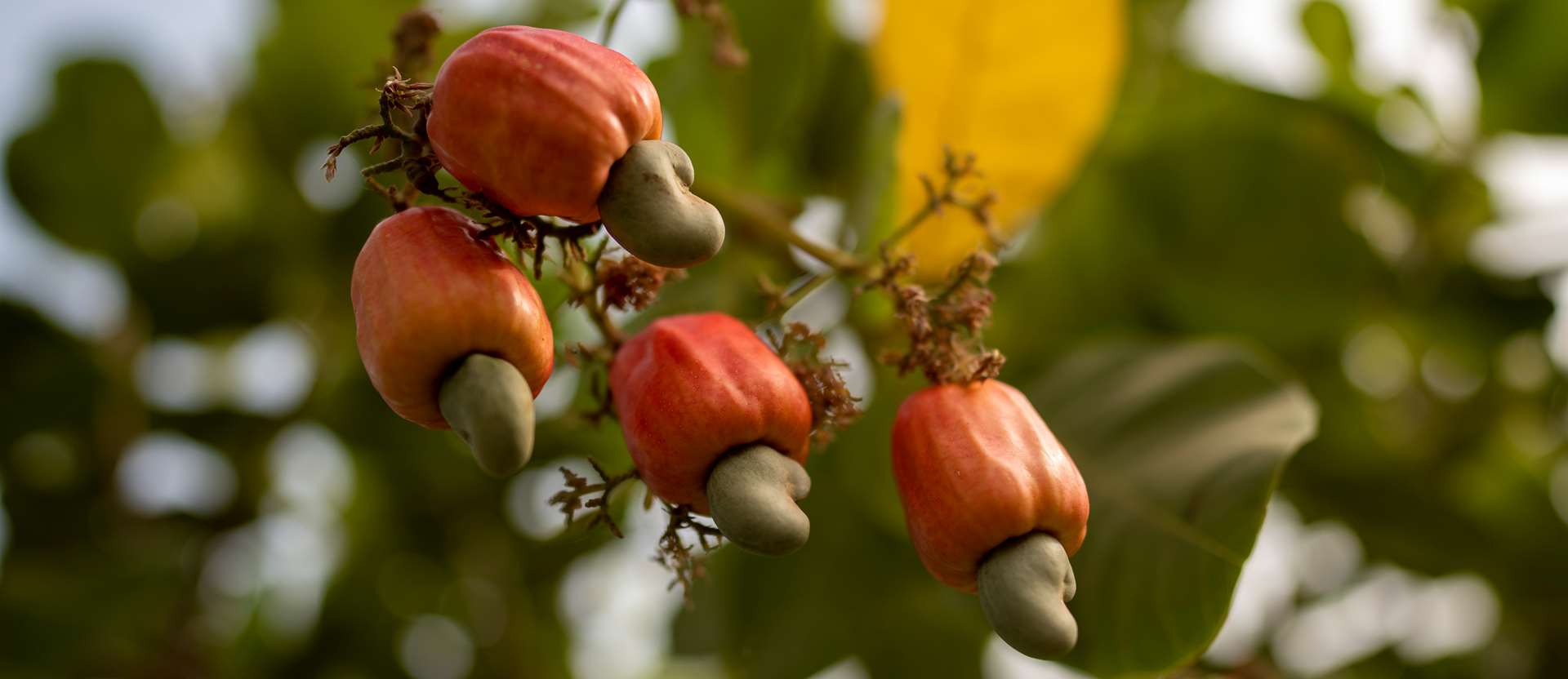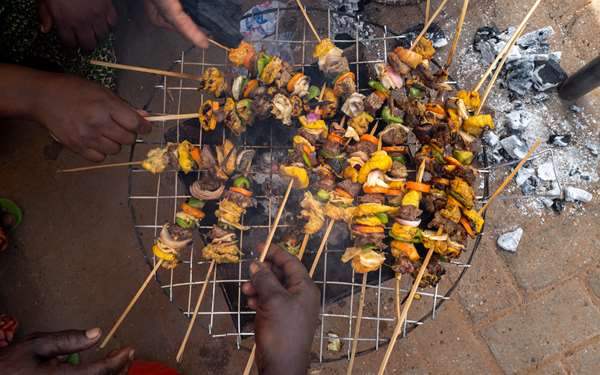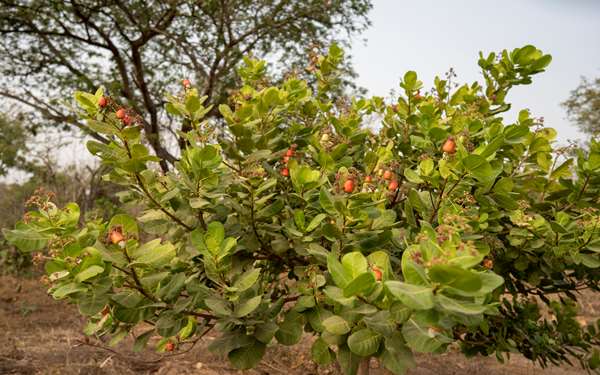
Cashew trees, in a nutshell
Learn more about our five favourite treesThey are a kitchen staple in many of our lives, but how much do you really know about the cool cashew? Here at Tree Aid, we’re nuts about this incredible tree – it’s helping to restore land, grow incomes and tackle poverty for the communities we work with.
Top 5 Reasons We Love Cashew Trees -
- They’re funky-looking and colourful!
- Zero Waste farming – every part of the tree gets used
- They’re providing nutritious foods for the communities where they’re grown
- They’re drought-hardy, land-restorers and income-growers
Read on to learn about our favourite cashew facts, and find out what makes it such a well-suited ‘super tree’ to aid our mission of restoring land and growing income in Africa’s drylands:

Where does it come from?
We’re all familiar with the distinctive crescent shape of the cashew nut, but have you stopped to think about how it grows? In a pod? Straight off the branch? The answer may surprise you…
The truth is, cashew nuts actually grow at the bottom of a ‘cashew apple’, the red, yellow or orange-coloured fruit of the cashew tree, which looks a bit like a pepper.
The cashew apple itself is one reason we love this tree so much – they are edible too, so provide yet another source of food and incomes for the farmers that grow them.
How do you use cashew apple?
As well as the nuts, cashew apples can be processed into a number of products for farmers to sell. Part of our work with Ghanaian farmers in the country’s West Gonja region has been about showcasing the many uses of cashew apple, which is often just fed to livestock, or thrown away as a by-product.
Together with our project participants, we’ve been finding (and sharing) inventive new ways to process the apples into tasty products to sell at market. We’ve even developed cashew apple recipe books for local entrepreneurs to use to aid their product development.
So far, cashew apple kebabs, cashew apple juice, and cashew apple jam are proving particularly popular! Who knew that this former waste product would be able to provide farmers with a whole range of products to sell to boost their incomes?!


Nuts about nutrition
“The cashew apple is one of the most nutritious food crops you can find. It has Vitamin A, Vitamin K, Vitamin C, Potassium and Calcium. The nut or kernel has a lot of protein and it contains no cholesterol and is low in fat, so it is the best alternative to replace groundnuts.” – Iddrisu Sumani
Cashew nuts are highly nutritional. 50g of cashews alone have as much protein as 1.5 eggs and as much iron as a 4oz beef steak! But did you know that the cashew apple is healthy too? High in vitamins and fibre, our project officer Wilson, explains the benefits this is having for the community:
“It is high in nutritional value… the public likes consuming it so much because it is sweet, and it is devoid of preservatives and other things; I think this is good for the public to support.”
Growing trees which provide nutritious, healthy food for communities is one of our top priorities – learn more about our Food Security & Nutrition approach.
Cashew - a tree you can rely on:
It takes between 1-2 years before cashew trees begin to fruit, but once they do, they can survive and thrive for many years.
Cashew trees are drought-hardy and produce a high-value product. This means that not only do they survive when other crops fail, they can also continue to provide a good income for the farmers that grow them. Cashew trees grow well in poor soils too, so can even help to restore the land around them. They stabilise the soil and reduce erosion, keeping soils fertile.
Coupled with the introduction of climate-smart farming techniques, this tree is helping to build communities’ resilience to changing temperatures and weather patterns.







